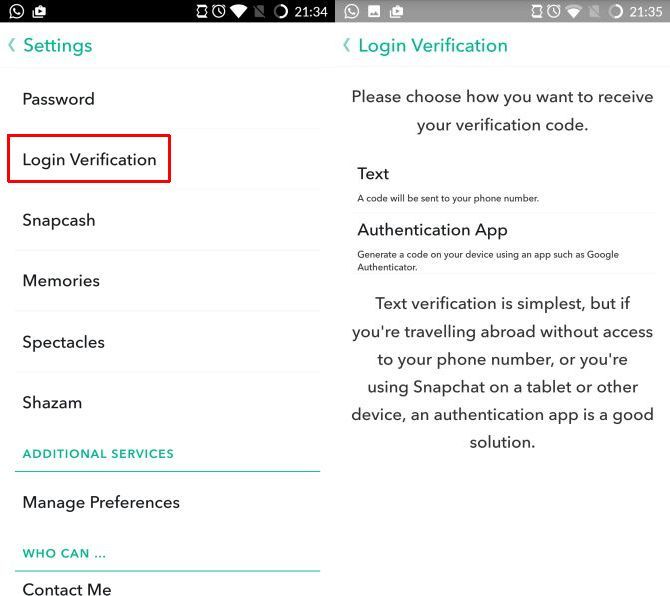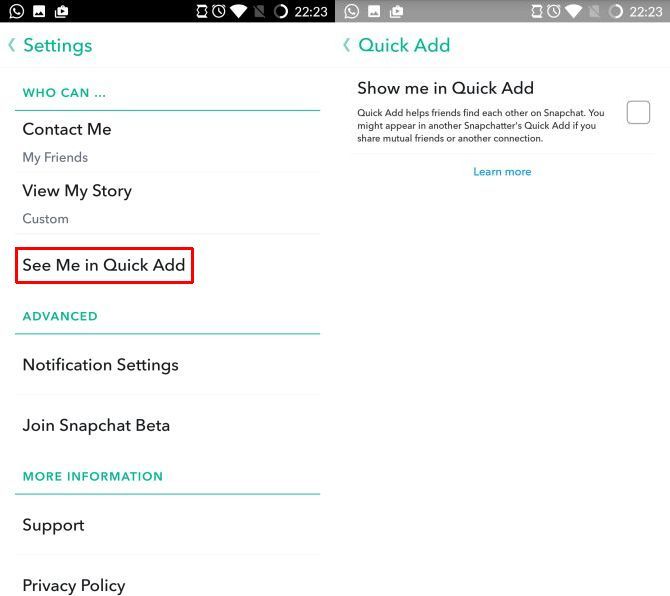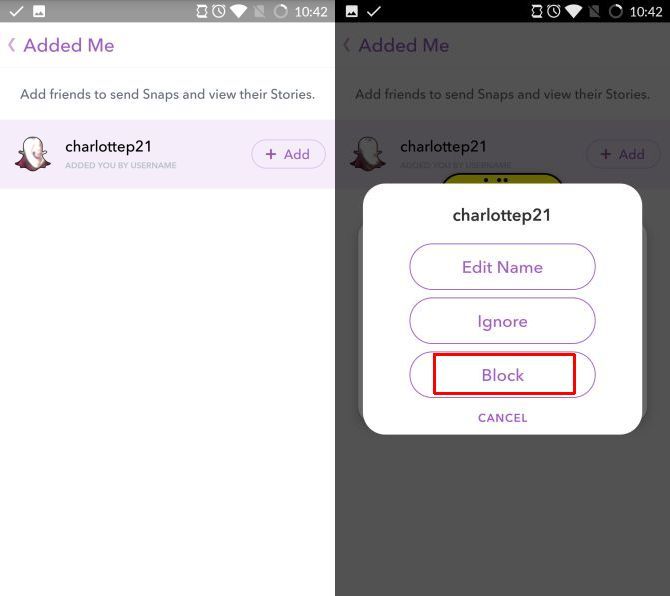Snapchat is one of the highest rated apps for both iOS and Android devices. It has taken the world by storm with its mixture of timed photos and videos, while others love the direct access it grants to celebrities and other people of interest.
Its popularity relies on the immediate destruction of messages sent between users. People of all ages use Snapchat to send illicit selfies set to self-destruct after a certain time. If the receiver takes a screenshot of the message, the sender is notified -- but nothing else happens. There are now numerous apps used to evade the inbuilt Snapchat alert, prompting serious security and privacy issues.
This is just one instance of a Snapchat privacy issue. I've got eight Snapchat security and privacy tips for you.
1. Friends Only
Snapchat sets your account option to friends-only by default. This is an excellent privacy-protecting starting point. Friends-only means only friends that have added you back can see your Snaps or send you theirs.
Keep it like this. You know who is viewing your Snaps. If you set it to Anyone, well, anyone can see your Snaps and Stories. And that can easily go horribly wrong.
2. Snapchat Is Permanent
Snapchat is built on the idea that your Snap is ephemeral. It is a tiny snippet of your life, captured, shared, and destroyed. Except for when it isn't.
There are numerous apps available for iOS and Android that capture Snaps without alerting the sender. They're trivially easy to obtain, and equally simple to use. Don't be fooled into complacency.
Want an example of what happens when this is ignored? In 2014, third-party website SnapSaved was breached. The result? Over 200,000 Snaps were leaked in an event known as the "The Snappening" (a play on the celebrity iCloud leak known as the "The Fappening").
Furthermore, the self-destruct feature doesn't mean you can take pictures of other people. Playboy model Dani Mathers was charged for body-shaming an individual she Snapped in the gym-locker room and posted to her Story feed.
Just because you can doesn't mean you should.
3. Login Verification
Unauthorized account access is painful. It doesn't have to be. Snapchat offers two-factor verification across all of your devices. Turn it on! It is a very simple security step and could be the difference between losing your account and images and having time to change your password and regain control.
Turn On Snapchat Login Verification (2FA)
- Open Snapchat on your device.
- Tap the Ghost icon at the top of the screen.
- Tap the Cog icon to open the Settings menu.
- Scroll down and select Login Verification.
- Tap Continue.
- Choose to verify via Text or an Authentication App.
- Enter the verification code supplied via Text or through an Authentication App.
- You're verified!
4. Hide From "Quick Add"
Snapchat introduced a "Quick Add" section. This allows friends of friends, or people in your phone contact list to easily add you to their friend list. It essentially works the same as Facebook's "Suggestions" feature. However, it can open you up to random individuals you have nothing to do with attempting to add you.
To turn it off, head to the Settings menu. Scroll down and select See Me in Quick Add, then uncheck the box.
5. Ignore Random Requests
From time to time you'll receive requests from random users, even if you turn the "Quick Add" feature off. Random requests present a privacy issue. If you accept a request, they'll be able to see your existing Snapchat Stories, and look back at what you've sent. Delete their request to add you by tapping Ignore when it appears.
If an individual user pesters you to add them (such as repeatedly adding you after you ignore their request), you can block them on Snapchat. Tap the Ghost icon to open your profile tab. Underneath, you'll spot Added Me. Select this. Select the errant user from the list, then the Cog icon. Finally, select Block.
You should know how to tell if someone blocked on you on Snapchat, as well.
6. Don't Openly Share Your Username or Snapcode
Many Snapchat users post their username to Facebook, Twitter, Instagram, or one of the myriad social media networks. It is an easy way to share your Snapchat contact information with friends. Unfortunately, if your social media privacy settings aren't watertight, you'll be sharing your Snapchat contact information with vastly more people than expected.
In addition to sharing usernames, people often post their Snapcode. A Snapcode is a QR code that other Snapchat users can scan to automatically add them as a friend.
7. Educate Your Teenager
Security and privacy doesn't cover just you. Your smartphone-owning teenager has probably sent thousands more Snaps than you. Even if they're seasoned-Snapchatters, it is never too late to talk to your teenager and explain the inherent dangers of supposedly destructible messages.
I think the message is clear: in the digital age, nothing is truly private, especially once they hit the send button.
8. Strong, Unique Password
There is a single piece of advice that all security researchers promote: use a strong, single-use password. This advice applies to every web service or application you sign up for.
We have tips on how to create a strong-but-easy-to-remember password, as well as how to make use of password managers.
Snap Safely
These represent the best ways to protect your Snapchat security and privacy. There is one more thing to consider, and it ties into Snapchat's main selling point. Your photo might self-destruct, but the terms and conditions state that Snapchat has the "right to store and share any pictures taken with the app."
Snapchat is extremely unlikely to publish a scandalous Snap you sent while drunk. However, if the authorities come knocking, they'll be obliged to hand-over anything they have.
Snapchat is fun. Keep it that way by being cautious about your security and privacy.
Is your Snapchat security up to scratch? Do you keep your Snaps and Stories private? Have you had any Snapchat mishaps? Let us know your thoughts below!
Image Credit: ChristianChan via Shutterstock.com




